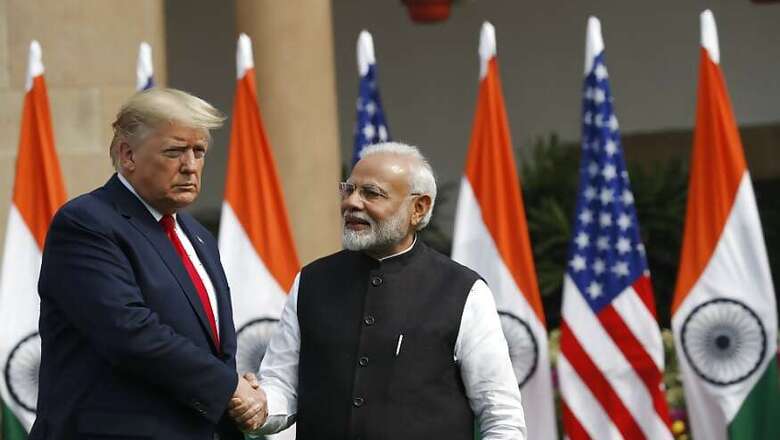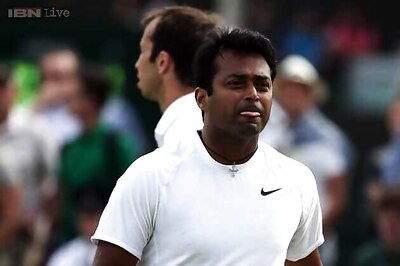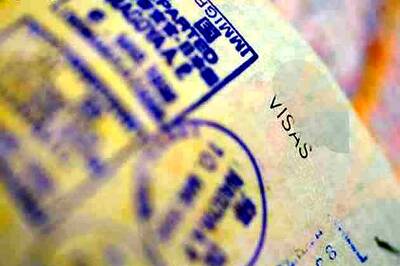
views
US President Donald Trump’s visit to India comes as an extension of the process of strategic partnership started by former presidents George W Bush and Barack Obama. With Chinese economy hitting a rough patch and the Indo-US trade relations somewhat faltering, it is an opportune moment for both countries to cement their strategic ties. Free trade is the foundation of international relations between many countries, even with the most difficult relationships. India and China are a prime example of it.
India and the US have had a healthy strategic trade relationship over the years, with the Indo-US Nuclear Deal signed by George Bush and former PM Manmohan Singh still remaining a landmark agreement of strategic importance between the two countries. Today, these two nations which can prospectively carry out civil nuclear trade are finding it difficult to trade even chickpeas and poultry.
Foreign policy is primarily guided by national interests, derived heavily from domestic circumstances. For both Prime Minister Narendra Modi and Trump, domestic issues loom large. It is no secret that both are using each other’s perceived domestic crises as an opportunity to come closer. Modi is facing domestic noise and persistent protests on the controversial Citizenship Amendment Act (CAA) and Trump is facing Presidential elections, with the Democrats clamouring for his chair. The political economy in both cases makes sense to bond rather than break. So what begun as ‘Howdy Modi’ in Houston is transforming into a much touted, widely hyped reception in Ahmedabad with ‘Namaste Trump’.
Purely from the lens of engagement between two great democracies, none of the political parties in India or in the United States should have any issues with two countries coming together, at least on a common goal of free trade. But this doesn’t seem to be the case, simply because, to put it rather mildly, both Modi and Trump have personalities that attract a lot of sharp reactions.
An inward looking world order where free trade was once a hallmark of engagement between liberal democracies, has unfortunately now turned into a boxing match of ‘tariff wars’. Where tit for tat and blow by blow is the new fair tariff game.
The strained trade relationship between the two countries has precipitated due to President Trump’s remarks of calling India a ‘Tariff King’ in 2018 and the removal of India from the Generalised System of Preferences (GSP) programme by his administration and also from India’s controversial and regressive e-commerce regulations and retaliatory tariffs. Hence there is a talk of a limited trade deal between the two countries.
The US is India's second-largest trading partner after China and trade in goods and services hit a record $142.6bn in 2018. Intriguingly, even as the US’ trade deficit with India is narrowing down and currently stands at less than a tenth of the US’ trade deficit with China, the friction between the two countries has increased— implying factors beyond trade imbalances.
In 2018, the US imposed new tariffs on aluminium and steel imports from India and raised the prospect of a Section 301 investigation into India’s tariff/non-tariff trade barriers. India responded with a list of retaliatory tariffs, including on imported US almonds, chickpeas and apples, to name but a few, but held off applying them. Transitorily, the US keeps mulling limiting Indians’ H1B visas quota to 15 per cent, keeping India’s polity worried about its economic impact.
India and the US are likely to finalise five agreements, including on trade facilitation, homeland security and intellectual property rights. This would be in addition to India also finalising a defence package worth $3.5 billion for 24 multi-role MH-60R Seahawk maritime helicopters and 6 AH-64E Apache attack helicopters.
The limited trade agreement, which many report as ‘elusive’, could include gains for the US worth nearly $10 billion, with possibly greater market access for agricultural and dairy products. This is again interesting because the US has revoked India’s status in the GSP.
India expects that its GSP benefits would be reinstated. However, it seems Modi’s diplomatic maneuvering on this front is having little impact. United States Trade Representative (USTR) released a federal notice on announcing the removal of a group of countries from its methodology for countervailing duty (CVD) investigations, within days of announcing US President Trump’s visit to India. As a result, India was removed from the list of developing countries that “are exempt from investigations into whether they harm American industry with unfairly subsidised exports.”
With this move, the US essentially has now classified India as a developed country. Without GSP, the Indian economy is expected to bear a direct and indirect cost of nearly $260 million.
In this scenario, it is essential for India to chart out a different path of diplomatic reach out to the US on the trade front, rather than roadshows and photo-ops.
(The author is a student of Public Policy at the Takshashila Institute, Bangalore. Views expressed are personal.)




















Comments
0 comment